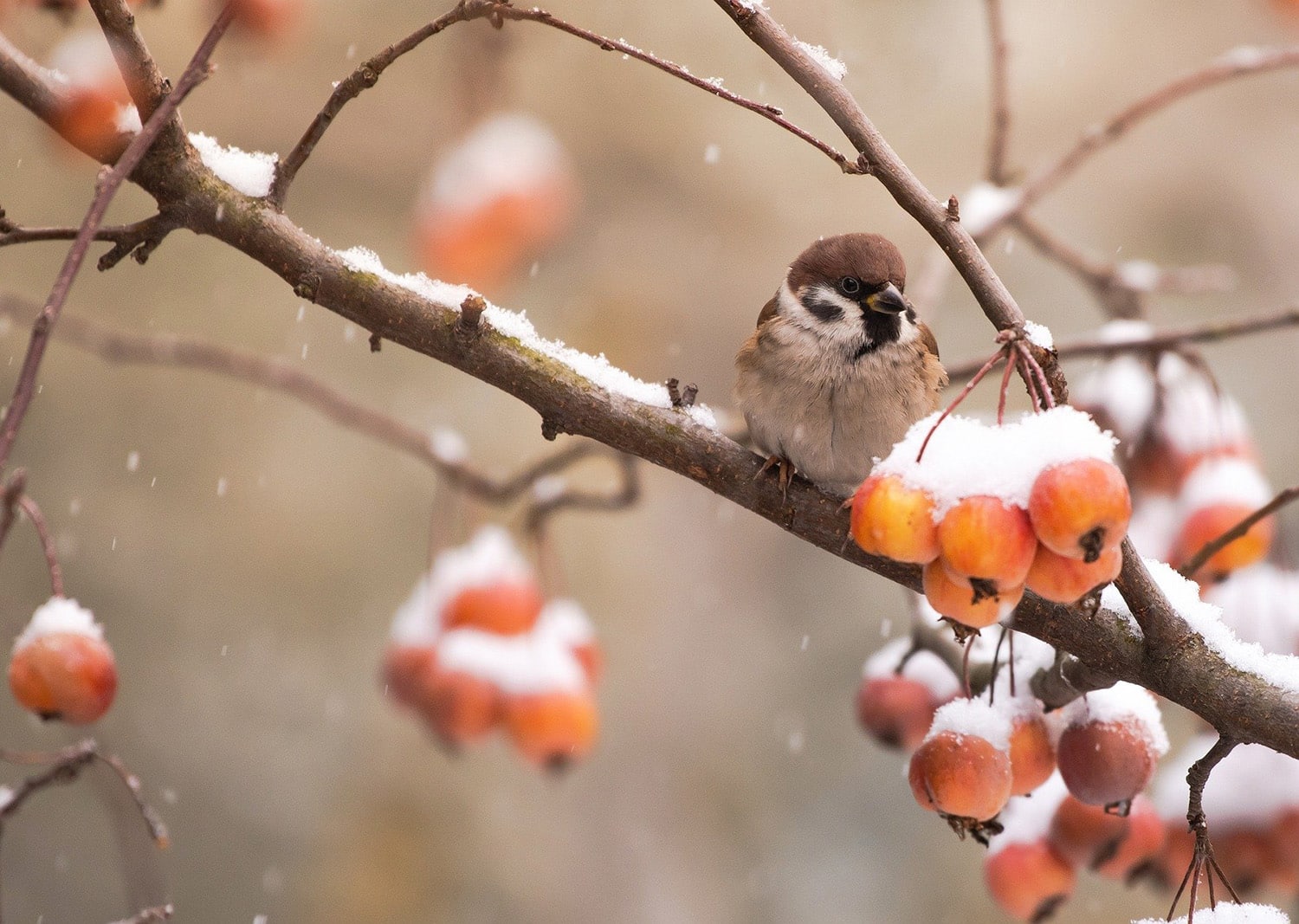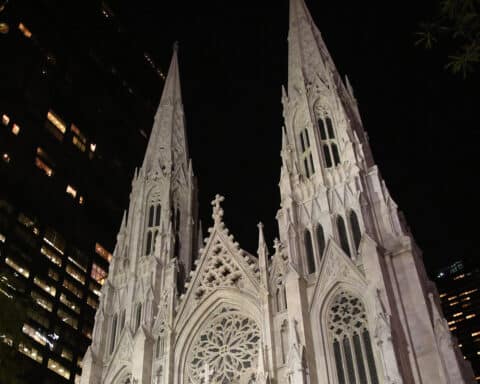(OSV News) As winter moves in I miss the multitude of birds that come to feed. The noisy jays and cooing doves, the flashy goldfinches and woodpeckers, the sweet little house wrens and comical nuthatch have all migrated away to less demanding climates.
The birds that remain are few, and predominantly sparrows. The nature of this little bird is both communal and noisy. Their simple chirrups and cheeping can seem incessant, the chorus often heard late mornings or midday, when they gather in an open shrub to announce their delight; a hymn for being fed and for keeping the flock intact.
We gather in our church in much the same way.
These intrepid little birds do not migrate away from the coming winter, but rather draw closer to one another as the seasonal challenges become apparent. Predominantly seed eaters, they will be drawn to a source of food and open water, and announce their discovery to the flock so that all may share in the blessings of bounty.
In winter, their competitive territorial squabblings of summer gives way to flock survival — something we can see in our society, too. The quarreling among Christians (and we all disagree now and again) gives way to the demands of generosity and prayer in times of crisis or struggle, whether for our own urgent needs or those of others.
A common bird
Something I find most endearing of the sparrows in winter is their roosting habit. When the cold and storms set in, these little birds hunker-down together in a number of sheltered places to stay warm — the interior crotch of evergreen shrubs, a birdhouse or nest, within structures or under awnings — and there they find communal refuge. We can learn much from this little brown bird about community and cooperation while living a Christian life.
The sparrow is an opportunistic feeder who shows little fear of nearby threats. It has become closely associated with humans, seeking the scraps we leave behind in parking lots, picnic tables or bus stops. I recall one summer a dozen or so feeding on dead bugs from the grill of a parked truck, while others gathered underneath for the droppings. It reminded me of how extravagant God can be when he provides, and that we must make the most of every opportunity or gift.
The sparrow is common the world over, but originally migrated from the Middle East. In Jesus’ time sparrows were a food source, considered kosher, and acquired mostly by the poor. They were undoubtedly present at the Nativity of the Lord. Mary and Joseph would have recognized their chirping as they feasted on seeds that dropped from the stable straw in the manger, and the crumbs of food dropped on nearby paths by shepherds and kings.
I wonder if the weary Joseph and Mary were comforted by the reminder of God’s providence these little birds offered as they approached the stable and made their meals (and their noisy thanksgivings) around them.
Symbol of trust in God
Sparrows were and still are a symbol of confident trust in God’s care. A seemingly insignificant bird used in the Gospels to illustrate God’s love.
In the Catechism of the Catholic Church, paragraph 2115 we read that “a sound Christian attitude consists of putting oneself confidently into the hands of Providence” for whatever concerns we have. Those little brown birds, so affectionately spoken of in the Bible (and likely present at all times in the life of Christ) are tiny spiritual companions who school us in trust. They teach us when to draw together to weather the storms of life; how to find the food we need in the Eucharist and to tell others where it can be found. They show us how to sing songs of praise and lean fully into God’s providential care.
And “not one of them falls to the ground without your father’s knowledge” (Mt 10:29).
Isn’t that wonderful? Sparrows are small but significant. So, as Jesus continued, “do not be afraid; you are worth more than many sparrows.”





